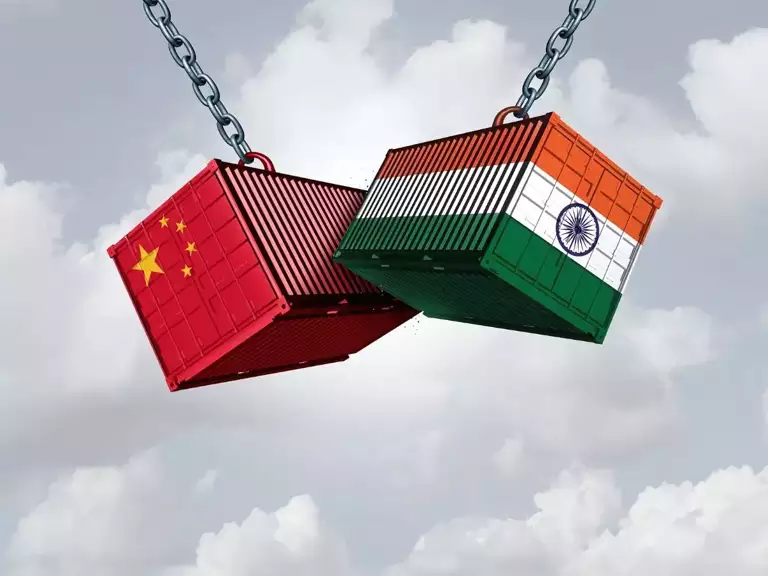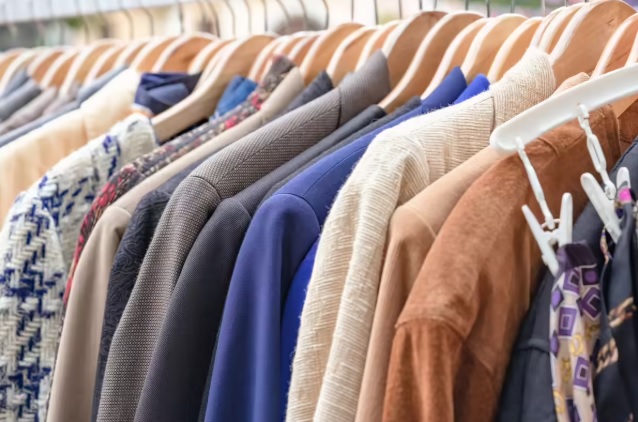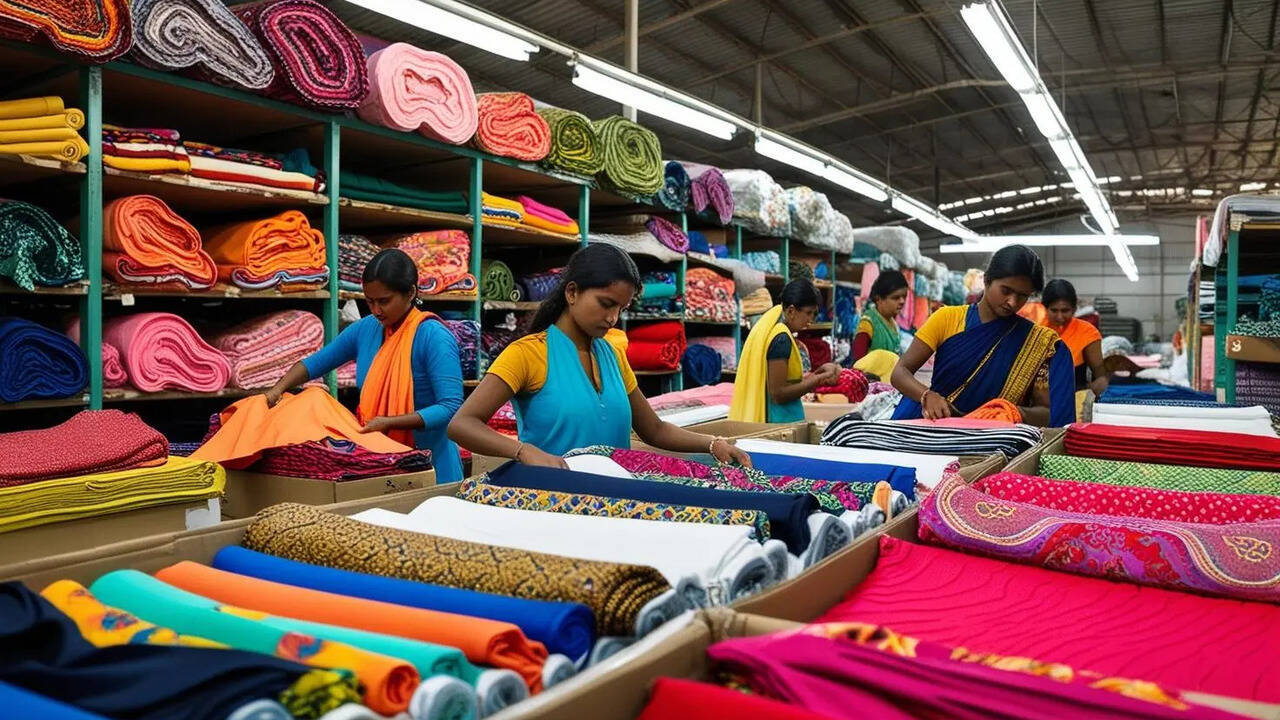FW
Any move by the Federal Board of Revenue (FBR) for imposition of regulatory duty on import of cotton yarn without taking all stakeholders of the textile chain on board will be strongly opposed by the Pakistan Readymade Garments Manufacturers & Exporters Association (PRGMEA). It came as a surprise for the sector that the FBR took some decisions to facilitate the textile sector in the country, in a meeting with All Pakistan Textile Mills Association (APTMA), Pakistan Textile Exporters Association (PTEA), and the Garments Manufacturers Association, said PRGMEA Chairman, Ijaz A Khokhar. However, the key stakeholder of the sector, the PRGMEA was not invited to the meeting.
Khokhar stated that garments value-added sector under the PRGMEA strongly opposed any barrier on import of fabric for garments export and also any regulatory duty imposed on yarn import. While formulating national policies regarding the textile chain, the value-added garment sector should be taken in confidence as well.
The present rate of 5 per cent custom duty on import of cotton yarn is adversely affecting the domestic spinning industry. Thus, appropriate measures in this regard, which includes imposition of regulatory duty on import of cotton yarn, need to be adopted. The FBR stated in a meeting that that an inter-ministerial committee that included representatives of the Federal Board of Revenue, the Ministry of Textile Industry and the Ministry of Commerce was constituted to give recommendations with regard to imposition of regulatory duty on import of cotton yarn.
However, the garment sector was completely ignored and not taken on board for any consultation, felt Khokhar. Incidentally, this is the only segment of textiles that showed a rise of more than 10 per cent in Pakistan's exports of 2014-2015, out of the total textile sector.
Prices of fabric dyes and chemicals used in the wet processing segment of the apparel production chain are likely to go up if current currency volatility continues. This is likely to pose a challenge for the garment sector in Tirupur. Reason: a substantial volume of the raw materials used for production of fabric dyes and chemicals is imported. With the rupee depreciating against the dollar, imports have become costlier.
Currently, almost 80 per cent of H-acid, a main raw material for the manufacture of fabric dyes, is imported. Apparel manufacturers in Tirupur feel any significant cost hike in fabric dyes and chemicals would result in higher processing charges which, in turn, will have a cascading effect on garment prices. The situation will thus hit competitiveness of garment exporters who are already facing stiff price challenges in the global market. If the currency volatility is not halted, the cost of dyes and chemicals will increase.
Apart from H-acid, a sizeable quantity of other raw materials like vinyl sulfone and K-acid used in fabric dyes production, acrylamide and polyvinyl alcohol used for manufacturing chemicals meant for the dyeing industry, is imported.
In recent years, Bangladesh has turned into a textile chemical exporter from importer. Experts say, this has helped the country save and earn millions of foreign currency. At present, Bangladesh exports hydrogen peroxide, a major chemical used in the bleaching and sterilising process in textile, paper and pulp industries, to several countries, including India, Nepal, Malaysia, Pakistan and Sri Lanka.
The largest destination is India, with more than 1,200 tons of hydrogen peroxide being exported here per month. This is followed by Pakistan, where, about 400 tons is exported. Data from Export Promotion Bureau, in the fiscal year 2014-15 reveals, over $7 million worth of chemicals were exported and India and Pakistan together accounted for about $6.5 million.
Mostafa Kamal, Chairman and Managing Director, Meghna Group of Industries says, there is a huge potential to export hydrogen peroxide to other countries as well. However, Pakistan’s antidumping duty on imports of chemicals from Bangladesh has affected the country’s export potential. The National Tariff Commission of Pakistan recently, issued a notice inviting interested parties to attend a hearing on the issue. A Bangladesh Tariff Commission official though, said that they would fight against Pakistan’s move.
The Maharashtra government is set to float a new textile policy, through which it would invest Rs 80,000 crores in the next five years in the textile sector. This would develop around the concept, ‘fabric to fashion’. BJP MLA, Suresh Halwankar from Ichalkaranji, who is the architect of the policy has stated that the cotton producing state will also become the producer of readymade garments, which is a first. Currently, the clothing industry from cotton to fabric to ready-to-wear clothes is scattered across the country. The new policy is being floated as transportation costs are increasing the cost of products while delivery time is also high.
A presentation to this effect was made by Halwankar before the CM Devendra Fadnavis, textile minister Chandrakant Patil, et al. The government has accepted the proposal in-principle and is chalking out a road map to implement it. The new policy is set to change the situation as the state will process its cotton within its domain and the ready-to-use cloth will also be produced in the state. Also, the government will assist financially through subsides with low interest, will identify locations and acquire land for setting up all types of units. Moreover, the power ministry will ensure sufficient power supply, while the labour ministry will organise skill development sessions and workshops, he added.
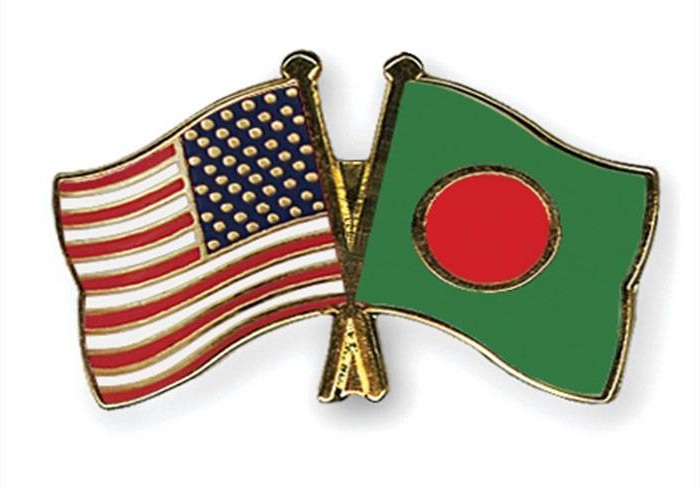
Bangladeshi team to visit US
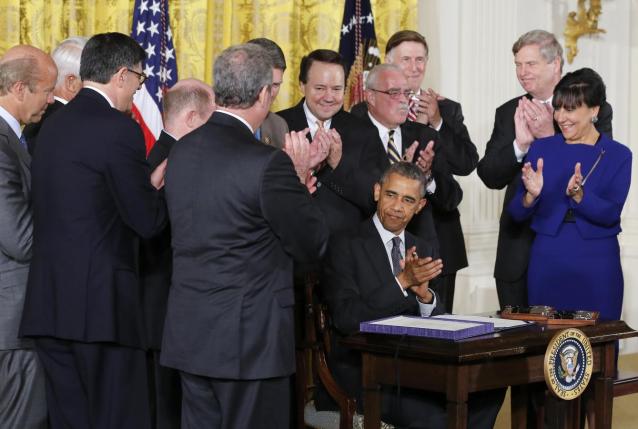
As per Hedayetullah Al Mamoon, Senior Secretary to the commerce ministry the team will got to America in the last week of September to urge the United States Trade Representative (USTR), the chief trade negotiation body of the American government, to review the progress report of Bangladesh Action Plan once again, and reconsider its decision of not allowing GSP to Bangladesh.
The USTR left out Bangladesh from the list of 122 nations for whom US President Barack Obama re-authorised the GSP, America’s biggest scheme for the world's poor nations, on July 29. The reason for the exclusion was Bangladesh's failure to fulfil all of the 16 conditions the US had laid out when it revoked the trade privilege two years ago on grounds of poor workplace safety and labour rights.
However, Bangladesh has said the country has made "tremendous progress" with the 16-point action plan laid out by the USTR after the twin industrial disasters of Tazreen Fashions fire and Rana Plaza building collapse put a question mark on the country’s fire and labour safety conditions. Bangladesh has worked upon bringing major reforms like the amendment to the labour law to allow full freedom of association by the workers and completion of inspection of 3,669 factories.
Although delayed, the labour and employment ministry hired additional 200 factory inspectors, as per the conditions set by the US. It allowed registration of more than 350 trade unions and opened a publicly accessible database of the garment sector. The government also arranged training programmes for industrial police as per the conditions.
Impediments to GSP access
Bangladesh, despite trying to implement several reforms, failed to formulate the rules for applying the amended labour law of 2013 and bring changes to the law to allow full freedom of association for factory workers of the export processing zones. The government also could not arrest the killer of labour leader Aminul Islam, who was tortured and brutally killed in Tangail in April 2012.
The GSP issue could have been discussed in the second meeting of the Trade and Investment Cooperation Forum Agreement (Ticfa) with the US next month, but the government has now decided to pursue it separately. Bangladesh and the US signed the Ticfa in November 2013 to settle trade-related disputes between the two countries through discussions.
In fiscal 2014-15, Bangladesh exported goods worth $5.58 billion to the US, with 95 per cent of them being garment products, which were subjected to 15.61 per cent duty. A year earlier, the amount was the same at $5.58 billion. American businesses imported $19.9 billion worth of products under its GSP programme in 2012, including many inputs that are used in US manufacturing, according to the USTR.
Ustr.gov
The next edition of Cashmere World Forum 2015 will be organised from October 7 to 9 in Hong Kong. The organisers have developed a highly stimulating and informative programme for the industry this year.
The connecting thread running through the whole forum programme is the concept of lightness – lightness in every sense as exemplified in the lightness and luxury of cashmere and other fine fibres in contrast to the tough political and economic background industry is currently facing.
The keynote speaker this year will be Anthony Keung of the Fenix Group. He will speak about the background of his company, how it evolved from manufacturing to retail brands and how it adapted to economic changes by switching from the Japan market to European and US markets and then to China and Korea. He will share his views on the prospects of the China market where he says their retail brands are still growing. He is still optimistic about the China retail market believing that the economic bubble in China is over and that the slowdown of the China market is a normal phenomenon.
Other topics of interest will cover current supply and demand situation of cashmere and how its environmental impact could be lightened, Cashmere World Colour Trends 2016/2017, Alpaca and the importance of its quality marks presented by the Executive Director of the International Alpaca Institute from Peru, along with several other topics based around the central theme of “lightness”.
With growing concern for environment, products manufactured using recycled materials or adopting a process with lower environmental impact have started to enter the global supply chain. Falling in line, Taiwanese textile manufacturers have achieved remarkable results in developing functional and environmentally friendly fabrics and related products over the years.
Taiwanese companies are creating a wide variety of products with eco-friendly characteristics and innovative design. Among these are functional fabrics, clothing made mainly with natural materials extracted from cinnamon and almond, polyester knitting fabric made from recycled plastic bottles, spun polyester jersey fabric made of recycle PET bottle staple fiber, patented earmuffs, and sports apparel manufactured on a process featuring lower energy consumption. All these meet environmental standards.
Taiwan is showcasing many of these products at the ongoing Sourcing at Magic, August 16 to 19, Las Vegas. The Green Trade Project Office was established in 2011 in Taiwan in response to the fast growing trend of green business, a sector which has gained importance with introduction of an increasing number of national and international environmental standards.
The aim of the Green Trade Project Office is promoting Taiwan’s green products and services via diverse marketing channels, offering consulting services to domestic companies and strengthening Taiwan’s overall competitiveness in the green economy.
www.greentrade.org.tw/eng/en/publications
The textile sector’s concerns will be addressed by the Federal Board of Revenue (FBR) with a handful of new initiatives such as a new anti-smuggling strategy, possible regulatory duty on import of cotton yarn, upward revision of customs values on import of fabric/garments, speedy payment of duty drawback/sales tax refunds, changes in Expeditious Refund System (ERS), clearance of second-hand/used clothing under ‘Red Channel’, and processing of 40 pending cases of sales tax zero-rating on electricity/natural gas supply to textile units.
As per sources, in the last meeting with All Pakistan Textile Mills Association (APTMA) and other associations, the FBR has taken some strong decisions. A committee was formed by the Minister for Finance to discuss and resolve the problems faced by APTMA. The meeting was chaired by Haroon Akhtar Khan, Special Assistant to the prime minister for Revenue. It was attended by the representatives of APTMA, Pakistan Textile Exporters Association (PTEA) and the Garments Manufacturers Association.
Both, exporters and local suppliers of textile items are facing several problems because of which they were losing their competitive edge in international and domestic markets. This was putting their viability in domestic and international markets at stake, and consequently, investment in textile sector had stopped.
Also, pending cheques against FED/SED refund claims, sales tax deferred claims replication, income tax exemption of raw materials under SRO 717, income tax refund u/s 65(B) & 65(E), duties and taxes on coal import, pending incentives of previous textile policy 2009-14 and outstanding claims of incremental textile exports under textile policy 2014-19, were other issues that plagued the textile industry. Representatives of the trade bodies were well informed about these issues.
Reliance Industries would probably be one of the world’s top five petrochemicals producers by the end of the financial year. When the group kicked off a $14 billion project in 2012-13 to pump up capacity at its Jamnagar unit, the target was to raise aggregate capacity of its 20 petrochemicals by 66 per cent. For polyester alone, it would be an 84 per cent jump, reaching a capacity of 3.5 million tons.
But falling crude oil prices have dragged down petrochemical prices particularly polyester. Polyester prices are still below five year averages and this is expected to continue over the next few years. Since polyester is essentially a derivative of crude oil, a fall in the price of crude oil has an impact on polyester prices, although with a lag of six to nine months. After almost a year, prices of polyester have started coming down. The average price of polyester products has come down by almost 25 per cent.
With weak demand from China, the world’s biggest polyester consumer, Reliance will be entering the market at a time when demand and margins are subdued. Polyester, a category of petrochemicals, is a by-product of the crude oil refining process. Polyester products such as polyethylene terephthalate, polyester filament yarn, polyester texturised yarn and polyester staple fiber are used to make textiles, bottles and industrial products.
www.ril.com/
Egypt's two biggest markets for textiles and readymade garments are the United States and the European Union. The country’s goal is to increase exports from $2.5 billion to $10 billion by 2025. Last year, around one third of Egyptian textile exports and more than half of Egyptian readymade garments went to the United States. Textile exports to the United States represent a quarter of non-oil exports and 20 per cent of total manufacturing in Egypt.
Though the textile industry has been blossoming, representing 20 per cent of manufacturing exports, the much celebrated Egyptian cotton has fallen from grace in recent years. Egyptian cotton was once the bar against which all other linens and clothing were measured. Since the 2011 revolution, Egyptian cotton’s star has faded as cash subsidies from the government and output of premium cotton have shrunk.
Egyptian cotton has extra-long staple, demand for this type of cotton does not exceed three to four per cent of the total demand for all fibers. Production of Egyptian long-fiber cotton has fallen from nearly 2.5 billion bales in 1970 to just 3,40,000 bales today.
The industry has realised expensive Egyptian cotton can’t be used to produce cheap yarn. To be a major player, other fibers including short staple cotton have to be used. Nevertheless Egypt will not completely abandon the luxury cotton that bears the nation’s name.



